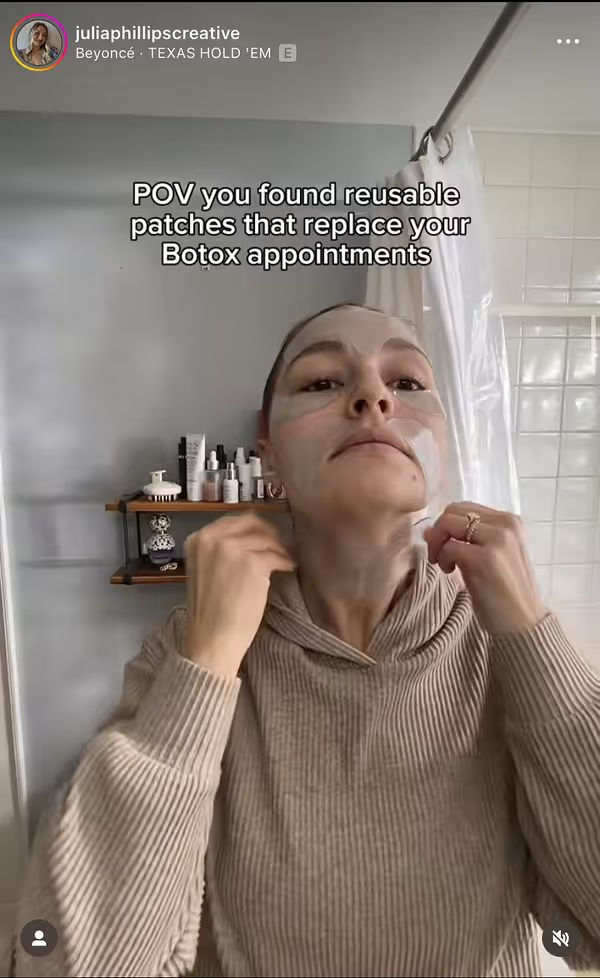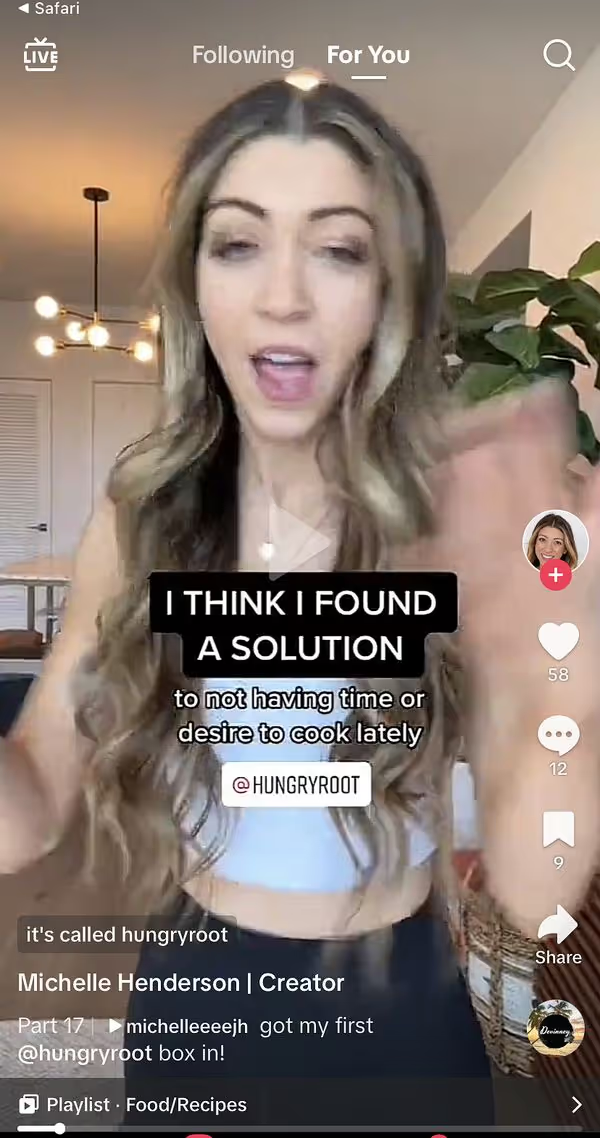Summary
As a creator of user-generated content, you should start by putting your best foot forward to attract and win over new clients. This is easier to do when you have a portfolio.
The good news is that creating a solid portfolio is easier than you might imagine. In today’s guide, I’ll take the time to explain how to make a UGC portfolio. I’ll also share some examples along the way.
📈💡 Show UGC on your site with Flockler
Get going faster and earn more by showing your best content.
🌟 Why Flockler?
- Supports Instagram, TikTok, and 13+ platforms. No tech skills required.
- Super easy. It offers a simple drag-and-drop experience.
- Design to fit your brand: adjust colors and design with no code.
What is UGC?
UGC (user-generated content) is any organic content that customers create about a brand; it could be product reviews, unboxing experiences, or even testimonials. There's a lot of it out there these days, as by 2033, it is estimated that 78% of all online content will be UGC. Here's an example:

Why do brands love UGC? First, it can help them build a positive image. In the example above, Fatima had nothing but praise for Nick’s restaurant, giving it a nice PR boost. With the added services of a good-quality food PR agency, Nick’s restaurant can expect brilliant PR results. Also, UGC leads to more sales because 80% of consumers prefer to buy from brands with this content style.
Businesses don’t want to miss out on these UGC benefits. That’s why they often engage UGC creators (like you!) to create paid content that resembles organic user-generated content.
However, UGC creation is competitive due to the low entry barrier. Anyone with a camera and a creative eye can join in. Having a solid portfolio to score brand deals before other content creators would be best.
The significance of building a UGC portfolio
Why do you even need to create a UGC portfolio? Let’s take a closer look:
Demonstrates expertise
Your portfolio is the best place to show potential customers you’re good at your work. It’s your chance to highlight the content you’re most proud of, skills, and even tangible results you’ve achieved. This helps brands see the level of expertise they bring and the outcomes they can achieve with their videos.
Builds trust and credibility
When potential clients see real examples of your work in your portfolio, it builds trust and confidence in your skills and creative direction.
You can even add testimonials or quotes from past clients to your portfolio. This further solidifies your trustworthiness and credibility.
Attracts opportunities
Finally, a UGC portfolio brings more opportunities to your service. For instance, you can optimize it for SEO to generate leads through search engines. You can also share it effortlessly on social media platforms, forums, and online communities to attract potential clients.
What to include in your UGC portfolio
If you want to create a perfect user-generated content creator portfolio, you have to know what goes in there in the first place. So, let’s get to business:
A captivating homepage and a compelling tagline
Your homepage is the main part of your portfolio, so it must grab your visitor’s attention and make a lasting impression.
Start with your hero section. Use high-quality visuals—either an image of yourself or past works—to grab the visitor’s attention.
Juliana, for instance, prefers using her picture.

Pair your hero image with a nice tagline that communicates your service benefits and unique selling propositions (USPs) to maintain this attention. See how Juliana pulls this off, too.
Furthermore, ensure your homepage includes previous client reviews and showcases your previous work to keep visitors engaged.
An engaging "About" page
Brands typically check your About page to understand who they’re dealing with beyond just your work. This page helps them connect with you and see if you align with their values.
So, use your About section to share your stories, motivations, and personality. For instance:

Even better, you can use a generative AI tool like Writer to create engaging and high-quality content for your About page.
Clear contact information
Crystal-clear contact info makes it easy for your clients to reach you. That’s why you should put your contact form or information where it’s easy to see. For instance, in the footer or behind a call-to-action button on your homepage’s hero section:

And don't forget to provide multiple contact options for prospects’ convenience.
Pricing structure
Having your rates readily available saves time for both you and potential clients. They can quickly see if your fair rates fit their budget, and you can avoid wasting time on inquiries that aren't a good match.
4 most common types of UGC
Brands typically look for creators who excel at these four content formats. Try to include at least two or more of them in your portfolio:
Product showcase
A product showcase is social media content that spotlights a specific product. This could involve using the product or discussing product benefits, functionalities, or features. Here’s a social media post from Julia Philips, where she showcases Derma Clara’s silicone patches:

Your prospective clients often need this form of UGC to generate organic awareness about their products and educate prospects. So, it would help if you had some of it under your belt.
The key to making an excellent product showcase content for brands is weaving a narrative around it, highlighting how it works and integrates into your lifestyle.
Problem/solution content
The idea behind a problem/solution UGC is to address your viewers’ pain points and show how a particular product or service provides a solution.
Michelle Henderson, for instance, used this content idea for Hungryroot. She describes the struggle of making time to cook in a way that’s relatable to her target audience. Then she proceeded to mention Hungryroot as the perfect solution:

Brands love this social content because it has high purchase intent. When viewers see someone solving a problem they have with a particular product or service, they can want that solution right away.
Unboxing videos
An unboxing video is the type of content where you share the experience of receiving and opening a product for the first time. You can highlight its content, discuss its features, or share your thoughts and feelings. Here’s a short-form video following this format from Amaka:

These videos give the target audience an authentic, honest look at the product. This can potentially build trust and convince others to buy the product. That's why brands love working with creators who can make engaging unboxing videos.
Before making an unboxing video, learn a bit about the product category. For instance, if you’re unboxing a phone, you should at least understand basic concepts like the build, processor, and memory. This will help you give informed opinions and avoid sounding clueless.
Voiceover vlog
In voiceover vlogs, you do an off-screen narration over a video. You can do this for videos documenting your travel experiences, DIY projects, or daily activities. Check out how Zabrena, the beauty Youtuber, nailed this format already a decade ago:
Prospective clients also need creators who can create these kinds of videos and showcase their products in them. But in this case, the product showcase has to be more subtle, organic, and seamless. Can you see how Diana cleverly chipped in Frisbee in her narration? That’s the kind of natural integration you should aim for.
4 UGC portfolio examples for fresh ideas and insights
Before I round off, let’s go through the professional portfolios of some established UGC creators. I hope you can also find valuable insights and spark creative ideas for your portfolio.
Life with Michelle
Michelle’s portfolio displays UGCs from various niches, highlighting her diverse experience. She also included a call to action that leads to her social profiles.

This makes it easy for brands to reach out to her. It would help if you always aimed for this level of diversity and accessibility in your portfolio.
Anaiah Orlando
Although he’s been in video production for over half a decade, you could sense that Anaiah is still relatively new to UGC creation from his portfolio.

He doesn’t have many testimonials or stats yet, so he lets his examples speak. This approach could work wonders for beginners.
Maiu Lünekund
Maiu does an excellent job of including the video types, languages, and industries she’s willing to work with. This upfront information saves time for herself and her clients.

You can emulate her aesthetics and design elements: clean design, a simple color scheme, and a lot of white space.
Liam Cass
Liam’s portfolio teaches an important lesson: brag about your content and achievements. He prominently displays hard figures, including the brand he’s worked with, spending, and organic views generated.

This showcases his UGC expertise and authority, which would be necessary for landing clients.
Use Canva or Dribbble for inspiration
Are you stuck on how to design your portfolio? Visit Canva or Dribbble and browse through their selection of UGC portfolio templates.

Once you find a template that includes the essential elements I mentioned earlier and a few ideas from the examples I shared, customize it to your liking.
Conclusion
Brands can’t ignore UGCs, but your portfolio has to stand out for them to choose you as a creator.
This guide covered some practical ways to create a UGC portfolio. Your portfolio must have an excellent homepage, an about page, a pricing structure, contact info, and past content. Also, add two or more pieces of content I covered in this guide to your portfolio.
Feel free to check out the examples of high-earning creators I've shared. These will inspire you as you create your portfolio and pursue your dream content creator job.
Christ Norton hosts the UK’s 7th largest marketing podcast, Socially Unacceptable, and is the founder of award-winning B2C specialist PR agency Prohibition. His social media training blog is listed in the UK's top 10 PR blogs. For tons of digital PR tips, you can follow Chris here: @chris_norton.







